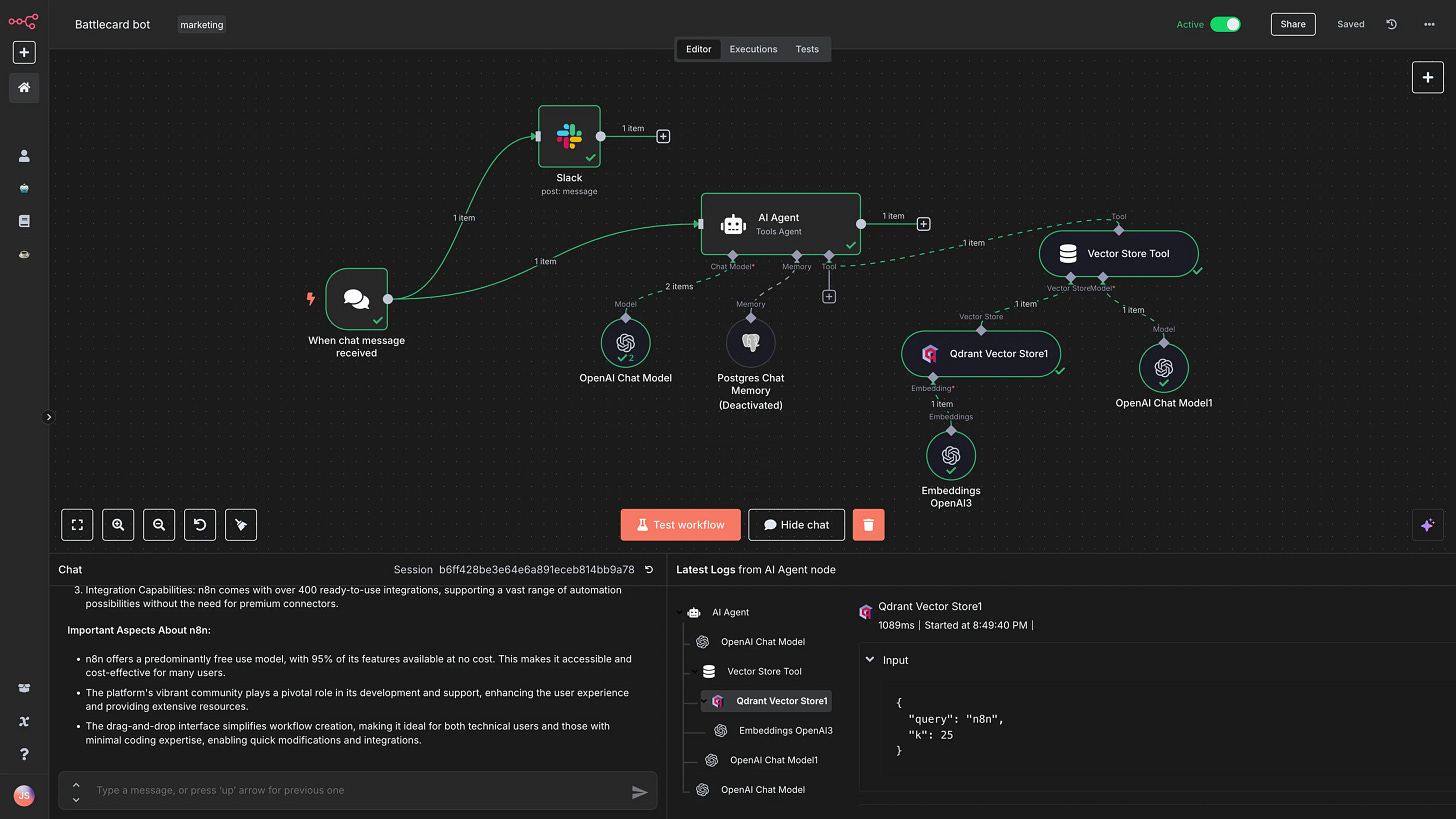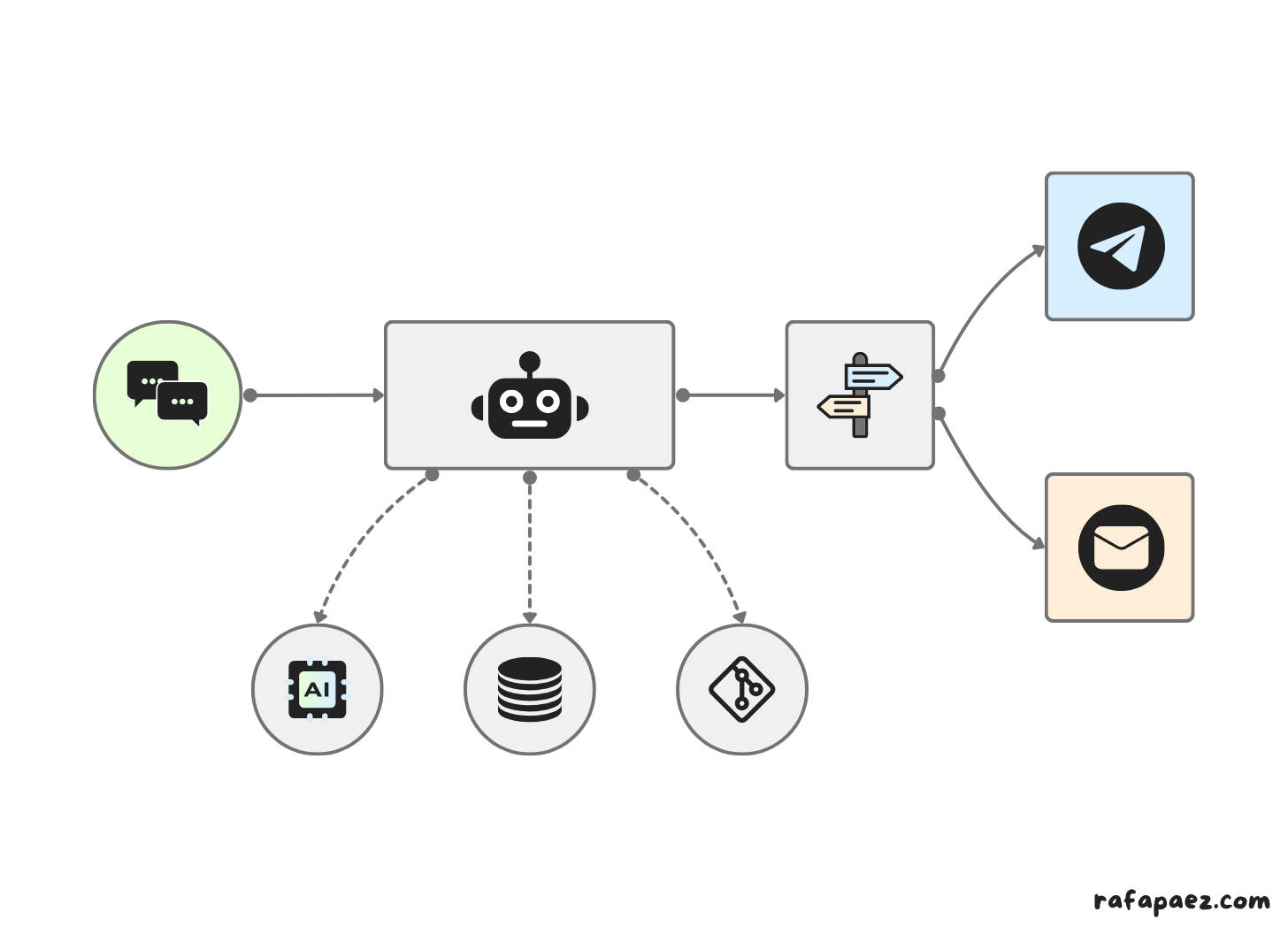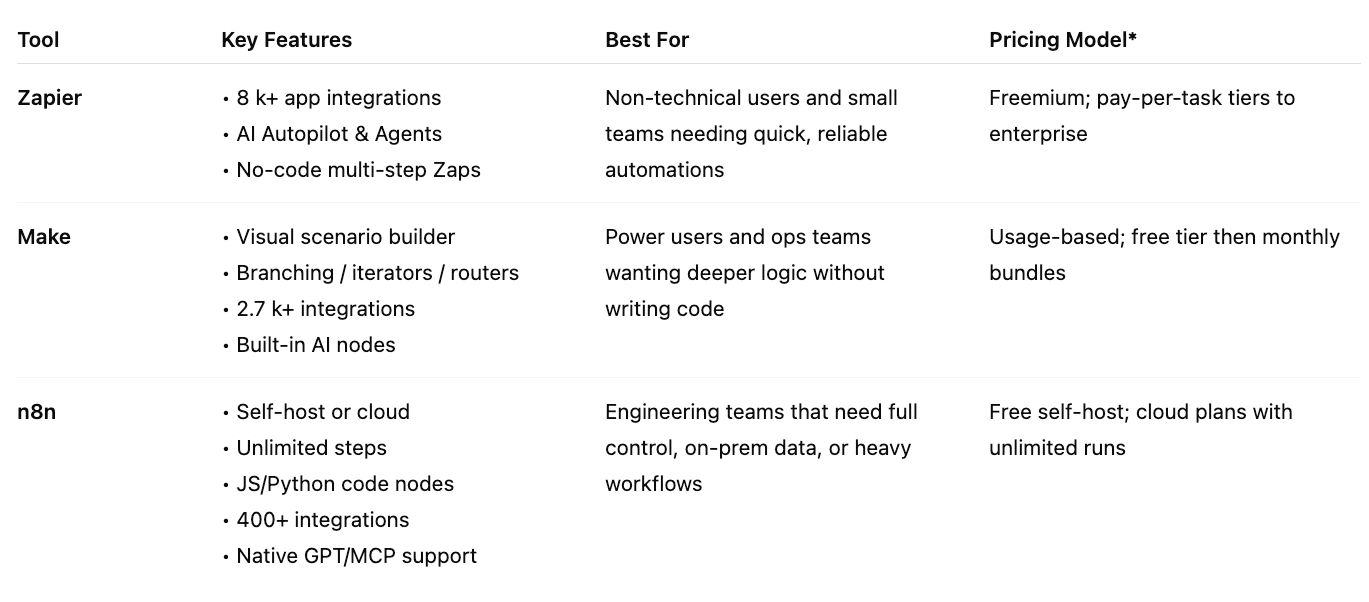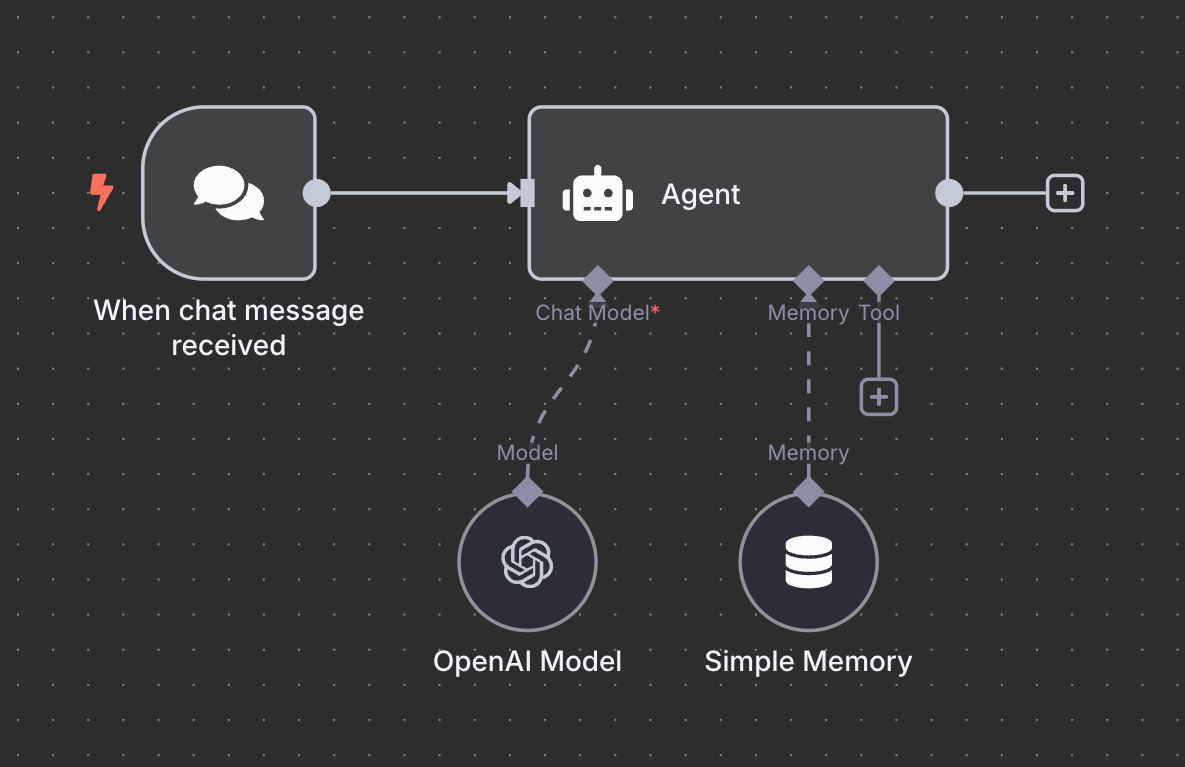The Rise of AI Workflows
Why AI workflow automation tools are exploding, and how to ride the wave
A small team. A smart model. A few powerful workflows.
That’s all it takes to ship a working product in 2025.
No backend. No frontend. Just logic wired together with a few drag-and-drop nodes in a workflow automation tool. From idea to revenue, the gap has never been smaller.
This isn’t a thought experiment. It’s live in production across startups and enterprises. Product engineers, platform teams, and CTOs are all trading glue code for AI-first automation.
Zapier and Make are excellent choices for quick, no-code wins. When you need deeper logic, full ownership, and predictable costs, n8n hands you the keys to the stack.
Let’s break down what’s happening, why it matters, and how to get ahead.
What Is an AI Workflow?
An AI workflow is a chain of tasks triggered by events, powered by logic, and enhanced by intelligence.
Think of it as a pipeline that listens, thinks, and acts:
A new request comes in → that’s the trigger
An LLM analyzes the content → that’s the reasoning layer
A response gets sent or a record updates → that’s the action
Unlike traditional automation, AI workflows don’t just move data; they understand it. That’s the difference. Models like GPT‑4 or Claude can classify, summarize, translate, extract, or decide what comes next.
At their core, AI workflows are modular systems that blend APIs, logic, and models into flows that scale. No need for a full team. Just a trigger, a few smart nodes, and a clear goal.
You can think of it as automation with a brain.
The Problems AI Workflows Solve Today
Remember the glue work that used to take days? The manual hand-offs, the spreadsheet shuffling, the ticket triage? AI workflows wipe it out in minutes. You can ship a working prototype before your coffee cools.
Plug in a language model and your automation goes from reactive to intelligent. Now it can:
Summarize documents on demand
Tag or triage support requests
Draft context-aware email replies
Score leads or detect tone in feedback
Route tasks based on reasoning, not rules
Want more power? Build agentic workflows. Let AI decide what happens next. The Model Context Protocol (MCP) makes it possible for workflows to think and act like tools with intent.
People are already putting this into action. Here are a few examples worth borrowing from:
A solo founder built an AI resume reviewer that screens CVs with Claude Sonnet 4 and ranks them in Airtable, all without code.
Another flow uses GPT-4 to auto-tag support tickets, fetch relevant docs with RAG, and draft first replies, cutting response time in half.
An open-source project combines OpenAI, Notion, and Telegram into a personal AI journaling assistant, fully powered by n8n.
This isn’t a side project trend. AI workflows are becoming the new backend for actual businesses, letting small teams automate the work others still do by hand.
Why It Matters to Engineers and Leaders
AI workflow automation isn’t about replacing developers. It’s about amplifying them.
With tools like n8n, engineers skip boilerplate and focus on product logic. They can prototype in hours, automate the busywork, and ship faster without waiting on infrastructure glue.
For engineering leaders, AI workflow automation is a force multiplier. It lowers the cost of experimentation, shortens delivery cycles, and reduces the chaos between tools and teams. It frees engineers to focus on meaningful work and reduces the cognitive load of repetitive tasks.
Best of all, teams can now add AI features without spinning up a dedicated ML squad. That means more velocity without more headcount.
Ignore this shift and you’ll fall behind. Embrace it and you unlock real leverage across your org.
The Tools Powering the AI Workflow Boom
We’ve had workflow builders for years. Zapier gave everyone a no-code “if-this-then-that” button. Make added a visual canvas so power users could branch, loop, and route data. Both still shine for quick wins, especially when the builder doesn’t write code. But their pay-per-step pricing and fixed logic start to pinch as workflows grow.
Then the open-source upstart n8n arrived.
“Think it. Build it. Extend it.” n8n is simple enough to launch a working automation in hours, yet powerful enough to scale with your business. No step limits. No rigid templates. Just full control over how your logic flows.

Self-hosted or cloud. Unlimited steps. Custom JavaScript and Python nodes. A drag-and-drop editor that now speaks GPT-4 out of the box. It even connects AI agents and tools letting a workflow reason, decide, and act.
AI engineers love n8n because it never says “no.” Leaders love it because it turns glue work into speed.
n8n isn’t a no-code toy. It’s a low-code powerhouse. Code when you need it, UI when you don’t.
Here’s how the three most popular tools stack up.
Each tool has its strengths. The right choice depends on how much control you want, how much code you’re comfortable with, and how far you plan to scale.
Getting Started with AI Workflows
AI workflow automation can feel like magic. But the on-ramp is more IKEA than rocket science: pick your kit, follow the steps, and snap each piece into place. Whether you code or not, you can build your first AI workflow before your coffee cools.
Choose Your Path
If you’re non-technical, start with Zapier or Make. Their drag-and-drop editors and large template libraries let you build simple automations in minutes.
If you’re technical but new to automation, test-drive n8n Cloud. You get a visual canvas and can drop into JavaScript or Python when your logic needs more power.
If you’re an engineer who wants full control, self-host n8n. You own the stack, avoid per-step fees, and can connect to private APIs or on-prem data without red tape.
Learn the Basics
Workflow fundamentals: Zapier Learning Center and Make Academy are great for learning the core mental model of automation.
n8n in action: Explore the n8n Workflows Library and GitHub repos like awesome-n8n-templates or n8n workflows for real, forkable examples.
Deeper dives for builders: Check out the n8n Docs, the r/automation Reddit community, and YouTube channels focused on AI workflow automation.
One Small Step
Spin up an n8n cloud account or run
npx n8nin your terminal to try n8n locally.Select “Test a simple AI Agent example” or import a starter AI template from the n8n gallery.
Add your OpenAI key if your workflow uses the OpenAI Chat Model component.
Tweak the logic to fit your workflow.
Hit save and watch the busywork disappear.
AI workflow automation is no longer reserved for Big Tech or PhDs. It’s here, it’s fast, and it’s surprisingly fun to learn.
Final Thoughts: The AI Workflow Stack
The classic stack was backend, frontend, and database. The modern one adds AI, workflows, agents, and automation. These are the tools that let small teams move faster than ever.
Ignore this layer and you’ll ship slower and spend more hours on repetitive work. Embrace it and you’ll prototype in hours, reduce overhead, and focus on real product value.
If you haven’t tried AI workflow automations yet, the gap between you and the frontrunners widens every day. Start with one nagging task, wire it up, and feel the leverage.
Already using it? Double down. Keep n8n in your toolbox, share what you build, and push the limits of what a single flow can do.
Automate or be automated. Your move.
Thanks for reading The Engineering Leader. 🙏
If you enjoyed this issue, tap the ❤️, share it with someone who'd appreciate it, and subscribe to stay in the loop for future editions.
👋 Let’s keep in touch. Connect with me on LinkedIn.




